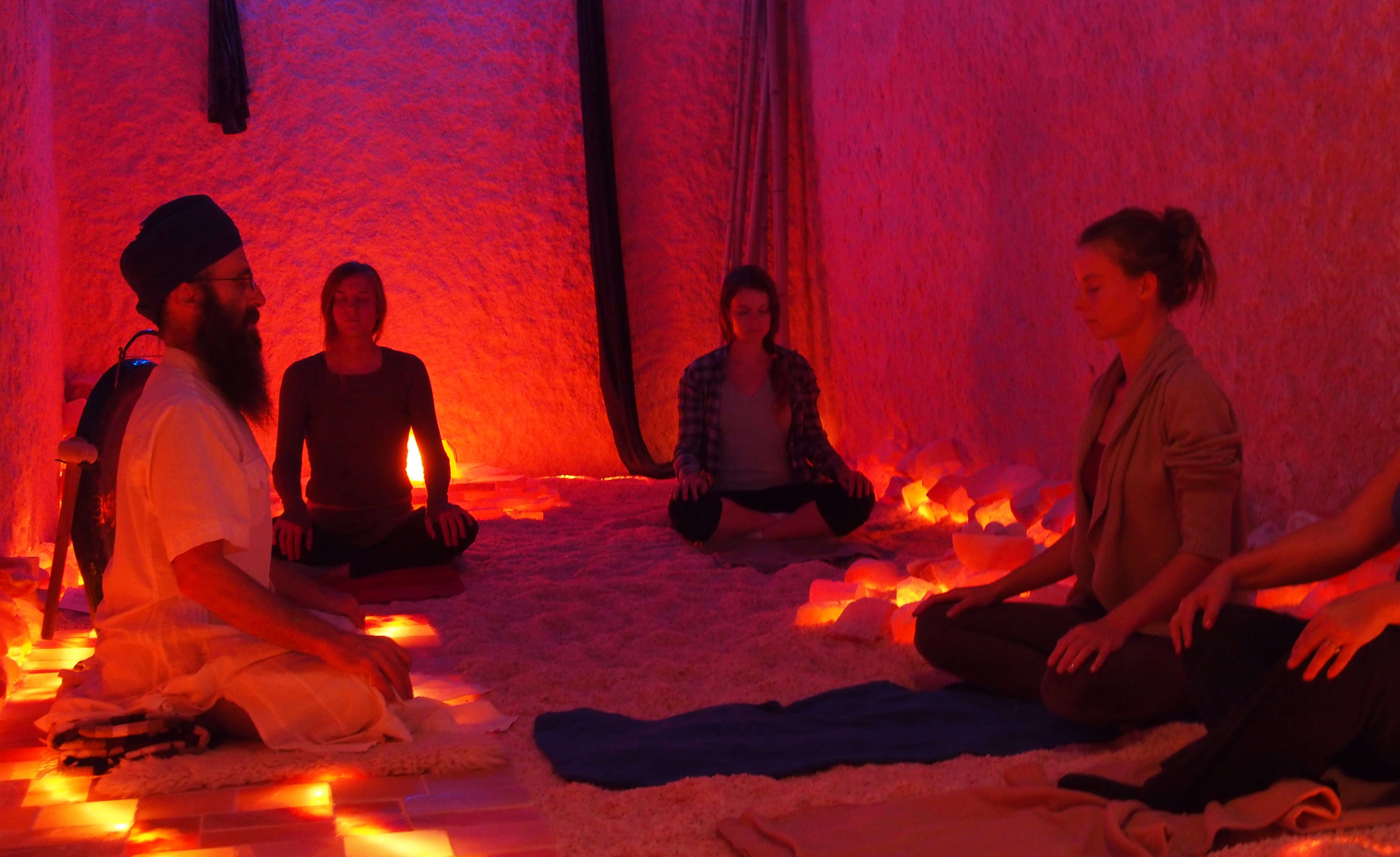Salt has medically documented and proven healing properties, but the idea that just sitting in a room filled with salt can cure your ailments is a relatively new trend in the United States. Although many people believe in the healing properties of salt, the salt spa has mostly been confined to Europe. In the last several years, though, the number of salt caves in this country has risen. Now, yogis are getting in on the action as well. Salt caves lend themselves to calming, introspective experiences that pair perfectly with asana practice. So what should you know about salt caves and yoga?
How salt caves work
Salt caves are thought to alleviate conditions from stress to insomnia to sinusitis, and are particularly helpful for breathing issues. The salt crystals are broken up into small particles by a salt mill called a Halogenerator to create therapeutic dry salt that is also negatively ionized. Proponents of salt cave therapy believe that these negatively ionized particles have substantial benefits when inhaled. The finely ground salt particles can be breathed in deeply for health benefits that you wouldn’t get breathing air, say, at the beach, where salt particles are too large to reach the lower respiratory system.
Besides the health benefits touted by salt cave enthusiasts, one of the clear benefits comes from simply being in the space itself. Salt caves are designed to be relaxing, and the experience alone, with or without the presence of salt, is a soothing one. At the Salt Spa of Asheville, owner Ines Clark has designed the environment itself with comfort in mind. “Besides the salt air, there are five tons of Himalayan salt in the walls and the floor,” said Clark. “It feels very soft. There are no big rocks, which would make the aesthetic harder. We have small salt lamps and drapings. It’s very inviting.” The space is, indeed, gorgeous, with a luminous interior lit by soft light and the pink glow of the salt crystals.
Salt caves and yoga
This inviting environment is ideal for yoga. The Salt Spa of Asheville offers two yoga classes: weekly kundalini yoga, with local teacher Bob Bauer, and slow yoga with yoga nidra, taught by local teacher Katherine Caldwell.
The kundalini yoga class in the salt cave is about the practice of breathing. “In the kundalini class, students practice the breath of fire and breathe salt deeply into their lungs. This strengthens and cleanses the lungs and the student also gets a boost of respiratory immunity. It’s rejuvenating,” Clark said. The kundalini class includes a gong meditation.
The slow yoga class includes opening postures for the lungs and ends with a yoga nidra, an Indian practice for going into a state of the deepest possible relaxation. “The salt cave is very fertile ground for yoga nidra,” said Clark, “because you can go into a very deep space.”
The composition of the salt crystal itself is also important to Clark and her teachers. “Since Himalayan salt has as wonderful crystal structure and holds a very nice energy, it really supports the spiritual practice of Yoga, which I consider to be the heart of Yoga,” she said.
Yoga’s health benefits are heightened in the salt cave, said Clark. People with chronic issues, such as asthma, can also benefit from practicing in the salt cave. “Yoga is a great activity for strengthening the lungs and the muscular system,” said Clark. “People with these kinds of chronic conditions should visit a salt cave daily for three to six weeks, and then come once a week for maintenance.”
Clark compared salt therapy to acupuncture. “You aren’t just cured after one time,” she said. “The more exposure you have, the more benefits you receive.”
Have you practiced yoga in a salt cave? What did you think?


















Leave a Reply